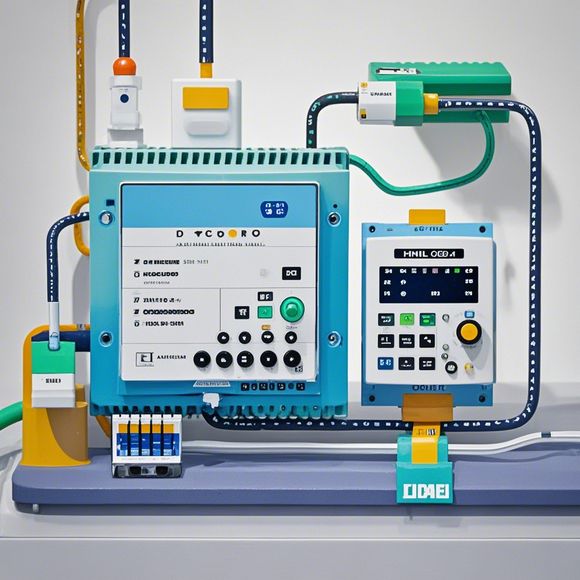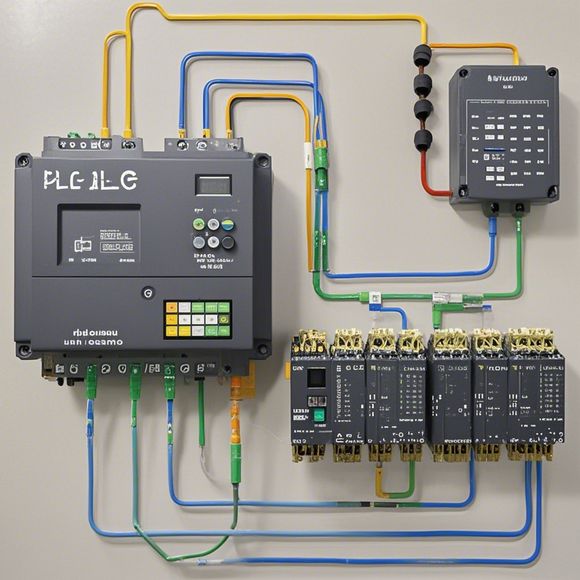What is a PLC Controller?
A PLC controller, or Programmable Logic Controller, is an electronic device that controls and monitors various industrial processes. It's essentially a small computer system that allows operators to set up and program the logic for complex control systems. This means that it can be programmed to perform specific tasks based on predefined algorithms and instructions, which makes it very flexible and efficient in managing various industrial processes.
Introduction:
Hello everyone! Today, we're going to talk about one of the most critical components of modern manufacturing systems - the PLC controller. So, without any further ado, let's dive right in and get started!
What is a PLC?
Firstly, let's define what a PLC is before diving into its functions and applications. A Programmable Logic Controller (PLC) is an electronic system that can be programmed to perform specific tasks based on inputs from sensors or other devices within a production line. It's essentially a microcontroller that can be customized to perform a wide range of functions, including monitoring process variables, controlling machines and machinery, as well as managing data flow between various systems.

Why use a PLC?
Now that we've established what a PLC is, let's talk about why it's such an important tool in today's manufacturing world. First and foremost, PLCs offer numerous benefits over traditional manual controls. They are highly reliable and can operate for long periods without needing frequent maintenance. Additionally, they allow for greater flexibility and customization, which means that manufacturers can tailor their systems to meet specific requirements and goals.
Moreover, PLCs can significantly enhance efficiency and productivity by automating repetitive tasks, reducing errors, and minimizing downtime. This can ultimately lead to better overall performance and cost savings for businesses.
Applications of PLCs
So, how exactly do PLCs work? Well, they typically consist of several key components, including the CPU (Central Processing Unit), RAM (Random Access Memory), and input/output modules. The CPU is responsible for processing commands and instructions, while RAM stores temporary data. Input/output modules handle communication with other devices within the system, such as sensors or actuators.
Within a PLC system, tasks are broken down into smaller subroutines or "programs" that are stored in the memory of the CPU. These programs are then executed based on inputs from external sources such as sensors, valves, or motors. As a result, the PLC executes a series of actions in order to achieve the desired outcome, all while monitoring the status of various variables throughout the process.

Examples of PLC applications include industrial automation, control systems for machinery, and even home appliances like refrigerators and washing machines. By using PLC controllers, manufacturers can create more efficient and effective systems that are also easier to maintain and troubleshoot.
Conclusion:
In conclusion, PLC controllers are essential tools for modern manufacturing systems. They provide reliability, flexibility, and efficiency that cannot be matched by traditional manual controls. With the increasing demands for higher levels of automation and digitalization in various industries, the use of PLCs will only continue to grow. If you haven't yet considered implementing one into your own processes, now might just be the perfect time!
Content expansion reading:
Articles related to the knowledge points of this article:
Smart Manufacturing Solutions with PLC Integrated Machinery
Plumbers Rule! The Role of PLC Controllers in the World of Waterworks
Connecting a PLC Controller to Your Computer
PLC Controllers: A Comprehensive Guide to Understanding Their Prices